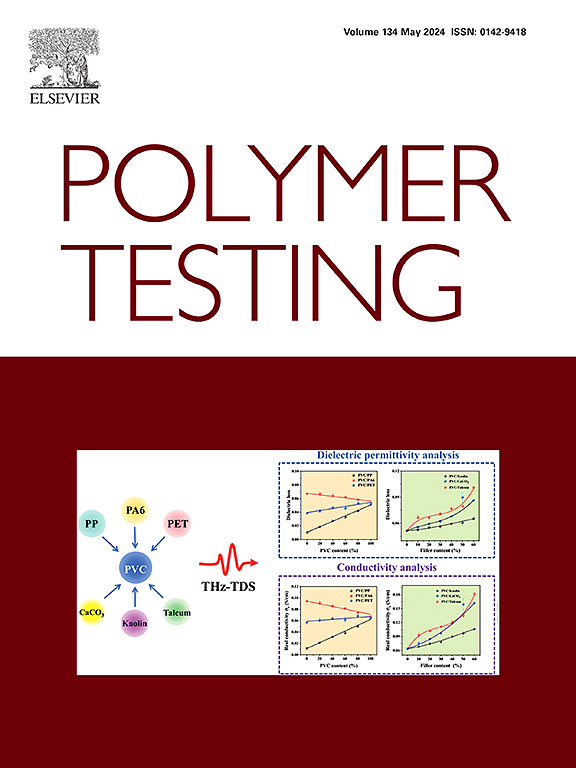Comparative study on taper preparation techniques for direct internal structure analysis of organic coatings applied on galvanized steel
IF 5
2区 材料科学
Q1 MATERIALS SCIENCE, CHARACTERIZATION & TESTING
引用次数: 0
Abstract
Depth-resolved analysis of organic coatings delivers crucial information on the interior material structure, e.g., on the formation of chemical gradients or on the impact of degradation processes. However, assessing the complex internal composition of modern heterogeneous paint systems requires a careful selection of suitable depth profiling methods. In this work, a comparative examination of four state-of-the-art preparation techniques for depth-resolved analysis, exemplified on a high-build polyester-polyurethane coating system applied on galvanized steel, is reported. The fabrication of wedge-shaped tapers by applying mechanical polishing, cryo-ultra-low-angle microtomy (cryo-ULAM), a standardised paint borer, and Ar+-ion flat milling was comprehensively evaluated with respect to determining preparation artefacts including smearing, plastic deformation or alterations of the exposed internal coating chemistry induced by the different techniques. To this purpose, 3D topographical imaging, scanning electron microscopy (SEM) and energy-dispersive X-ray spectroscopy (EDX) were employed to examine the resulting surface morphology of extended sections down to the steel substrate, which showed the displacement of material for the paint borer sections, while the polished samples contained grooves and smearing artefacts. Furthermore, correlative elemental and chemical analysis by Fourier-transform infrared (FTIR) spectroscopy and X-ray photoelectron spectroscopy (XPS) allowed to determine the impact of the respective preparation process on the bulk and surface chemistry of the exposed areas, e.g., the loss of chemical information after Ar+-ion flat milling. Overall, the fabrication of extended tapers for depth profiling by cryo-ULAM is favourably recommended by the comprehensive in-depth investigation performed in this study, which serves as a valuable basis for the future internal structure analysis of organic coatings.

直接分析镀锌钢有机涂层内部结构的锥度制备工艺比较研究
有机涂层的深度分辨分析提供了关于内部材料结构的关键信息,例如化学梯度的形成或降解过程的影响。然而,评估现代异质涂料系统的复杂内部组成需要仔细选择合适的深度分析方法。在这项工作中,对深度分辨分析的四种最先进的制备技术进行了比较检查,以应用于镀锌钢的高构建聚酯-聚氨酯涂层系统为例。通过机械抛光、低温超低角显微切开术(cro - ulam)、标准化油漆钻孔机和Ar+离子平面铣削,对楔形锥体的制造进行了全面评估,以确定制备过程中的工件,包括由不同技术引起的涂抹、塑性变形或暴露的内部涂层化学变化。为此,采用3D地形成像、扫描电子显微镜(SEM)和能量色散x射线光谱学(EDX)来检查延伸到钢基材的部分的表面形貌,其中显示了油漆钻孔部分的材料位移,而抛光样品包含凹槽和涂抹物。此外,通过傅里叶变换红外光谱(FTIR)和x射线光电子能谱(XPS)进行相关的元素和化学分析,可以确定各自的制备工艺对暴露区域的体化学和表面化学的影响,例如,Ar+离子平磨后化学信息的损失。综上所述,本研究全面深入的研究表明,通过低温- ulam制造用于深度剖面的扩展锥体是值得推荐的,这为未来有机涂层的内部结构分析提供了有价值的基础。
本文章由计算机程序翻译,如有差异,请以英文原文为准。
求助全文
约1分钟内获得全文
求助全文
来源期刊

Polymer Testing
工程技术-材料科学:表征与测试
CiteScore
10.70
自引率
5.90%
发文量
328
审稿时长
44 days
期刊介绍:
Polymer Testing focuses on the testing, analysis and characterization of polymer materials, including both synthetic and natural or biobased polymers. Novel testing methods and the testing of novel polymeric materials in bulk, solution and dispersion is covered. In addition, we welcome the submission of the testing of polymeric materials for a wide range of applications and industrial products as well as nanoscale characterization.
The scope includes but is not limited to the following main topics:
Novel testing methods and Chemical analysis
• mechanical, thermal, electrical, chemical, imaging, spectroscopy, scattering and rheology
Physical properties and behaviour of novel polymer systems
• nanoscale properties, morphology, transport properties
Degradation and recycling of polymeric materials when combined with novel testing or characterization methods
• degradation, biodegradation, ageing and fire retardancy
Modelling and Simulation work will be only considered when it is linked to new or previously published experimental results.
 求助内容:
求助内容: 应助结果提醒方式:
应助结果提醒方式:


